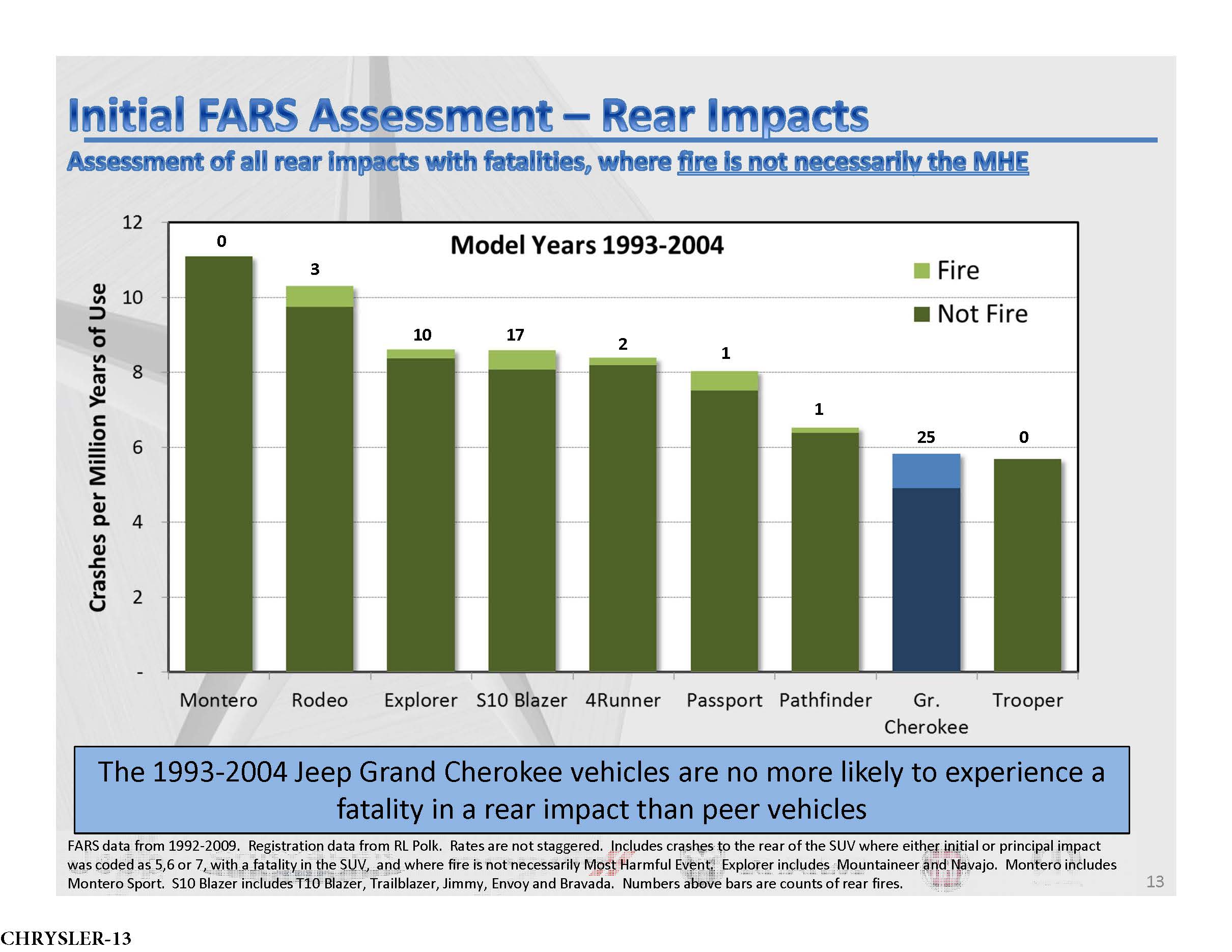Last Friday, David Shepardson of the Detroit News announced for NHTSA what many knew was coming: the 1993-2004 Grand Cherokee and 2002 – 2007 Jeep Liberty rear-impact fuel-fed fires investigation is over. No recall. The ornamental trailer hitch will stand as a symbolic gesture of a remedy.
This one has all the hallmarks of what has become an Office of Defects Investigation classic: design defect too difficult/costly to correct? Check. Bogus, untested remedy? Check. Appearance of action? Check.
You could tell that NHTSA was real proud of its work by the timing of the disclosure: 5 p.m. on a Friday before a holiday weekend. Classic public relations bury-the-news-and-hope-nobody-notices move. Release the information, and head home for the holidays. Classic and classy!
“Words cannot describe how disappointed I am in NHTSA and US DOT in general,” says Jenelle Embrey, the fiery Linden, Virginia woman who teamed up with the Center for Auto Safety to advocate for a recall on the older model Jeeps with the fuel tank aft of the rear axle design. Embrey launched her own crusade after witnessing the deaths of 18-year-old Acoye Breckenridge and the driver Heather Lee Santor in an October 2012 crash. Embrey’s dad, Harry Hamilton, managed to save one occupant of Jeep Grand Cherokee before it exploded. Continue reading
